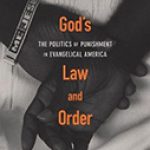Hamilton And The Law: Reading Today’s Most Contentious Legal Issues Through The Hit Musical

Editor: Lisa A. Tucker
Publisher: Cornell University Press, 2020. 336 pages.
Reviewer: Brandon Golob ǀ January 2022
Public understanding of the U.S. Constitution is astoundingly low. Survey after survey reveals that the average American cannot enumerate the most basic rights granted by the Constitution and its Amendments. We should be concerned about this, especially in light of the ongoing assault on Roe v. Wade, misinformation about vaccines and mask mandates designed to ameliorate this unprecedented pandemic, endless partisan battles, and more. It may not be possible to conclude from where most people glean their (mis)understanding of constitutional law, but every so often, a cultural tornado sweeps the land and leaves a lasting impact on public knowledge. Enter (stage left) Lin-Manuel Miranda’s Hamilton: An American Musical (hereinafter “the musical”), a sung-through (or perhaps more accurately, “sung-and-rapped-through”) musical about the previously overshadowed Founding Father Alexander Hamilton. The musical has been undeniably successful, regardless of the metrics by which you measure that success. In addition to the record-breaking Broadway box offices, multiple national tours, and multiplatinum album and mixtape, the musical has also spawned an award-winning film version, countless productions and parodies, a museum exhibition, and books. Enter (stage right) Hamilton and the Law, a timely and educational text.
Hamilton and the Law brings together the voices of 33 prominent legal scholars and practitioners to explore what the musical teaches audiences about the Constitution, law and legal systems more broadly, and many other sociopolitical issues. The subtitle of the book, reading today’s most contentious legal issues through the hit musical, is a bit of a misnomer. Yes, this is a book about legal issues, but (similar to the musical it analyzes) it is also a history lesson, a commentary on contemporary social, cultural, and political battles, a meditation on death, and more. Given this scope, one would expect the book to be lengthy, but the 33 chapters are concise and separated into eight parts.
From a legal perspective, the authors cover issues that the musical deals with directly. It should come as no surprise that a musical with a Founding Father as the protagonist has much to say when responding to questions such as “What is the best way to interpret the Constitution?” or “How should the different branches of government operate?”. Constitutional law professors like myself will find a wealth of material to pull from (see parts 1 and 2 of the book) when teaching topics such as federalism, judicial review, and presidential powers. Many of the book chapters also cover legal issues that were not at the forefront of our Founding Fathers’ minds. For example, rather than exploring the substantive plot of the musical, some of the authors analyze how the creation of the musical itself is a worthwhile copyright case study (see part 7). Other chapters focus on how the musical, specifically Hamilton’s push for a national bank, sets the stage for learning about corporate law, boards of directors, and other crucial business concepts (see part 8). In short, this book could be a valuable part of legal curriculums covering constitutional law, business and commercial law, or intellectual property.
As previously hinted at, limiting this review to a discussion of legal issues would be a reductive analysis of what Hamilton and the Law achieves. After all, sociolegal scholars frequently highlight the gap between “law-on-the-books” and “law-in-action” to examine not just how law exists in statutes and cases, but in real-world scenarios. In other words, an analysis of Hamilton and the Law (and by extension, the musical itself) would be incomplete without consideration of the broader social, cultural, and political issues that the legal concepts intersect with. This is no small undertaking; from racism to immigration to misogyny to gun control, much is at stake in an analysis of this musical.
Since the musical’s debut in 2015, there have been ongoing public conversations and academic analyses of how the musical intentionally flips the script when it comes to racial representation. One of the most visible aspects of this tactic is the casting of LatinX, Black, and mixed-race actors to play historically white individuals. Hamilton and the Law adds to these crucial dialogues with four chapters (see part 3) explicitly exploring race. At its core, the musical is a reimagining of U.S. history – a thought exercise in how a different past would make good on modern day promises of diversity, equity, and inclusion. Related to these questions of race, the musical has also been wrapped up in contemporary immigration debates. As the book highlights, Alexander Hamilton was an immigrant, and the musical’s focus on this extends its strengths as a multiracial, multiethnic narrative (see part 5). This narrative captivated audiences while Donald Trump was mounting a presidential campaign rife with xenophobic, anti-immigrant rhetoric. Moreover, as explored in the book, the musical became a tool for protest during Trump’s travel bans, attempts to dismantle the Deferred Action for Childhood Arrivals program (DACA), and other attacks on immigration.
Although race and immigration are some of the most frequently discussed topics related to the musical, Hamilton and the Law also explores how the play is a lens for learning about other social justice topics such as women’s rights (see part 4) and gun control (see part 6). As noted at the outset of this review, it is a particularly crucial time to shed light on advocating for women’s rights due to the Texas abortion law. Moreover, similar to how the musical has been used to protest anti-immigrant executive actions, so too have parts of it been repurposed in the fight against gun violence. In short, the play is a vehicle for understanding and reframing a variety of today’s sociopolitical issues, and books such as this one expand those critical conversations.
Reading this book, I kept asking myself, “How can I use this to teach my students?”. Luckily, questions of pedagogical value are a prominent part of the text. Many of the authors are educators and readily share how they build the musical into their curricula. Countless arguments have been advanced, both in this book and elsewhere, about how the musical has ushered in a cultural shift – audiences are leaving the theater (or perhaps more accurately during the pandemic, turning off their televisions) with an altered vision of our country. One need not attend a theater or stream the film version to feel the impacts of this shift because educators at all levels are reinventing their pedagogical approaches to teaching civics, the Constitution, and more. As renowned constitutional law scholar and professor Erwin Chemerinsky admits early in a chapter of the book, “I confess to rarely using technology of any kind in the classroom, but I do play for my students ‘Cabinet Battle #1’ [from the musical], the debate between Alexander Hamilton and Thomas Jefferson over whether to create a Bank of the United States.” I exhort educators from a wide array of disciplines to read Hamilton and the Law – not only are many of the chapters worth sharing with your students, but there are also numerous examples of how you can engage your students by integrating parts of the play.
If a national survey about Alexander Hamilton had been distributed several years ago, the American public would have likely performed even more poorly than when asked to enumerate the most basic rights granted by the Constitution and its Amendments. Then came the musical and suddenly there is a nation of semi-experts on a previously overshadowed Founding Father. Although the musical is not without its historical inaccuracies and criticisms, it is an undeniable reminder of the powers of storytelling, representation, and the arts. Books such as Hamilton and the Law amplify said powers by bringing the material to new audiences and providing scholarly commentaries on a mix of legal, social, political, and cultural topics. To see the applicability of this book, simply heed advice from the musical’s Schuyler Sisters: “look around, look around” because all our lives are deeply entrenched in these pressing issues.
Dr. Brandon Golob, Assistant Professor of Teaching in Criminology, Law & Society, University of California – Irvine


